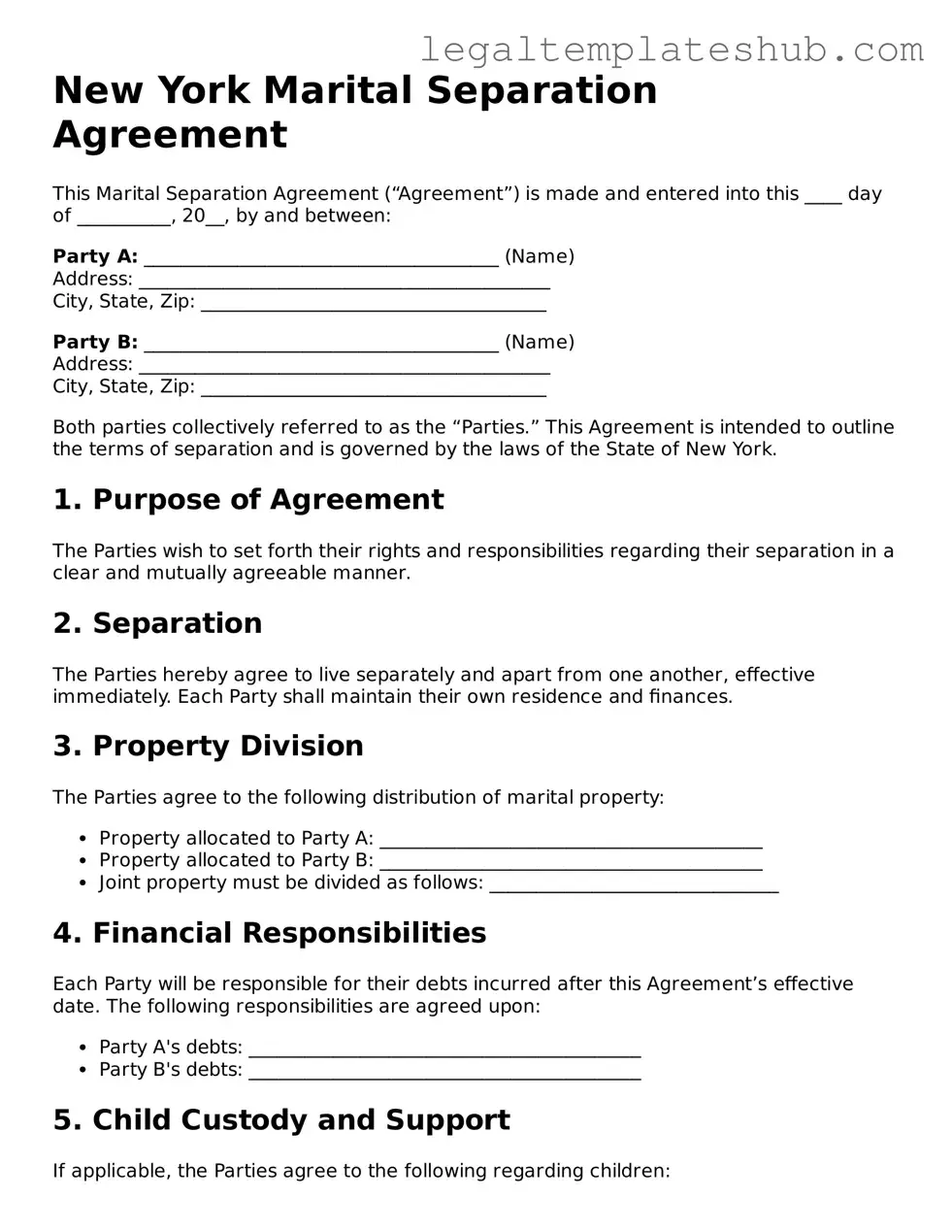Printable Marital Separation Agreement Document for New York
A New York Marital Separation Agreement is a legal document that outlines the terms and conditions under which a couple agrees to live separately while remaining legally married. This agreement typically addresses various issues such as asset division, child custody, and support obligations. For those considering this option, filling out the form is an essential step; click the button below to begin.
Access Editor
